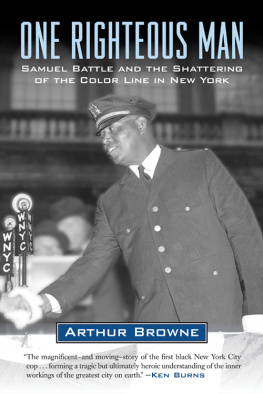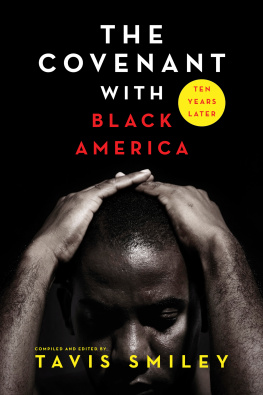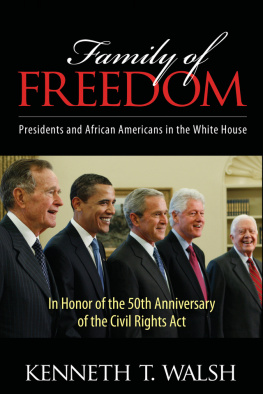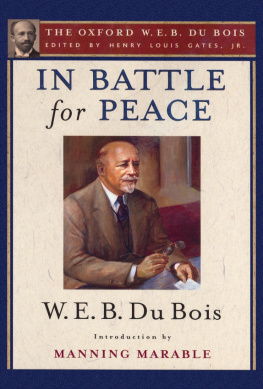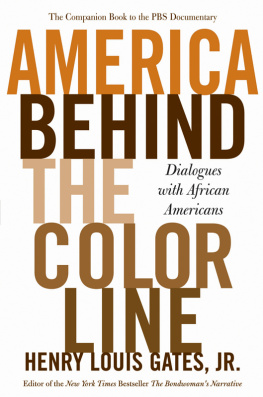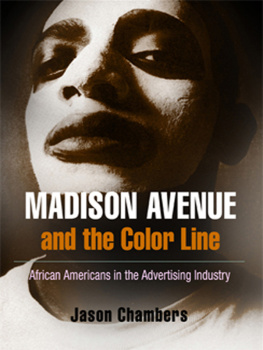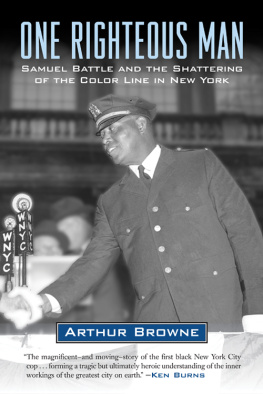Arthur Browne - One Righteous Man: Samuel Battle and the Shattering of the Color Line in New York
Here you can read online Arthur Browne - One Righteous Man: Samuel Battle and the Shattering of the Color Line in New York full text of the book (entire story) in english for free. Download pdf and epub, get meaning, cover and reviews about this ebook. year: 2015, publisher: Beacon Press, genre: Non-fiction. Description of the work, (preface) as well as reviews are available. Best literature library LitArk.com created for fans of good reading and offers a wide selection of genres:
Romance novel
Science fiction
Adventure
Detective
Science
History
Home and family
Prose
Art
Politics
Computer
Non-fiction
Religion
Business
Children
Humor
Choose a favorite category and find really read worthwhile books. Enjoy immersion in the world of imagination, feel the emotions of the characters or learn something new for yourself, make an fascinating discovery.
- Book:One Righteous Man: Samuel Battle and the Shattering of the Color Line in New York
- Author:
- Publisher:Beacon Press
- Genre:
- Year:2015
- Rating:5 / 5
- Favourites:Add to favourites
- Your mark:
One Righteous Man: Samuel Battle and the Shattering of the Color Line in New York: summary, description and annotation
We offer to read an annotation, description, summary or preface (depends on what the author of the book "One Righteous Man: Samuel Battle and the Shattering of the Color Line in New York" wrote himself). If you haven't found the necessary information about the book — write in the comments, we will try to find it.
When Samuel Battle broke the color line as New York Citys first African American cop in the second decade of the twentieth century, he had to fear his racist colleagues as much as criminals. He had to be three times better than his white peers, and many times more resilient. His life was threatened. He was displayed like a circus animal. Yet, fearlessly claiming his rights, he prevailed in a four-decade odyssey that is both the story of one mans courageous dedication to racial progress and a harbinger of the divisions between police and the people they serve that plague twenty-first-century America.
By dint of brains, brawn, and an outsized personality, Battle rode the forward wave of African American history in New York. He circulated among renowned turn-of-the-century entertainers and writers. He weathered threatening hostility as a founding citizen of black Harlem. He served as godfather to the regiment of black soldiers that won glory in World War I as the Hellfighters of Harlem. He befriended sports stars like Joe Louis, Jesse Owens, and Sugar Ray Robinson, and he bonded with legendary tap dancer Bill Bojangles Robinson. Along the way, he mentored an equally smart, equally tough young man in a still more brutal fight to integrate the New York Fire Department.
At the close of his career, Battle looked back proudly on the against-all-odd journey taken by a man who came of age as the son of former slaves in the South. He had navigated the corruption of Tammany Hall, the treachery of gangsters like Lucky Luciano and Dutch Schultz, the anything-goes era of Prohibition, the devastation of the Depression, and the race riots that erupted in Harlem in the 1930s and 1940s. By then he was a trusted aide to Mayor Fiorello La Guardia and a friend to First Lady Eleanor Roosevelt.
Realizing that his story was the story of race in New York across the first half of the century, Battle commissioned a biography to be written by none other than Langston Hughes, the preeminent voice of the Harlem Renaissance. But their eighty-thousand-word collaboration failed to find a publisher, and has remained unpublished since. Using Hughess manuscript, which is quoted liberally throughout this book, as well as his own archival research and interviews with survivors, Pulitzer Prizewinning journalist Arthur Browne has created an important and compelling social history of New York, revealed a fascinating episode in the life of Langston Hughes, and delivered the riveting life and times of a remarkable and unjustly forgotten man, setting Samuel Battle where he belongs in the pantheon of American civil rights pioneers.
Arthur Browne: author's other books
Who wrote One Righteous Man: Samuel Battle and the Shattering of the Color Line in New York? Find out the surname, the name of the author of the book and a list of all author's works by series.

